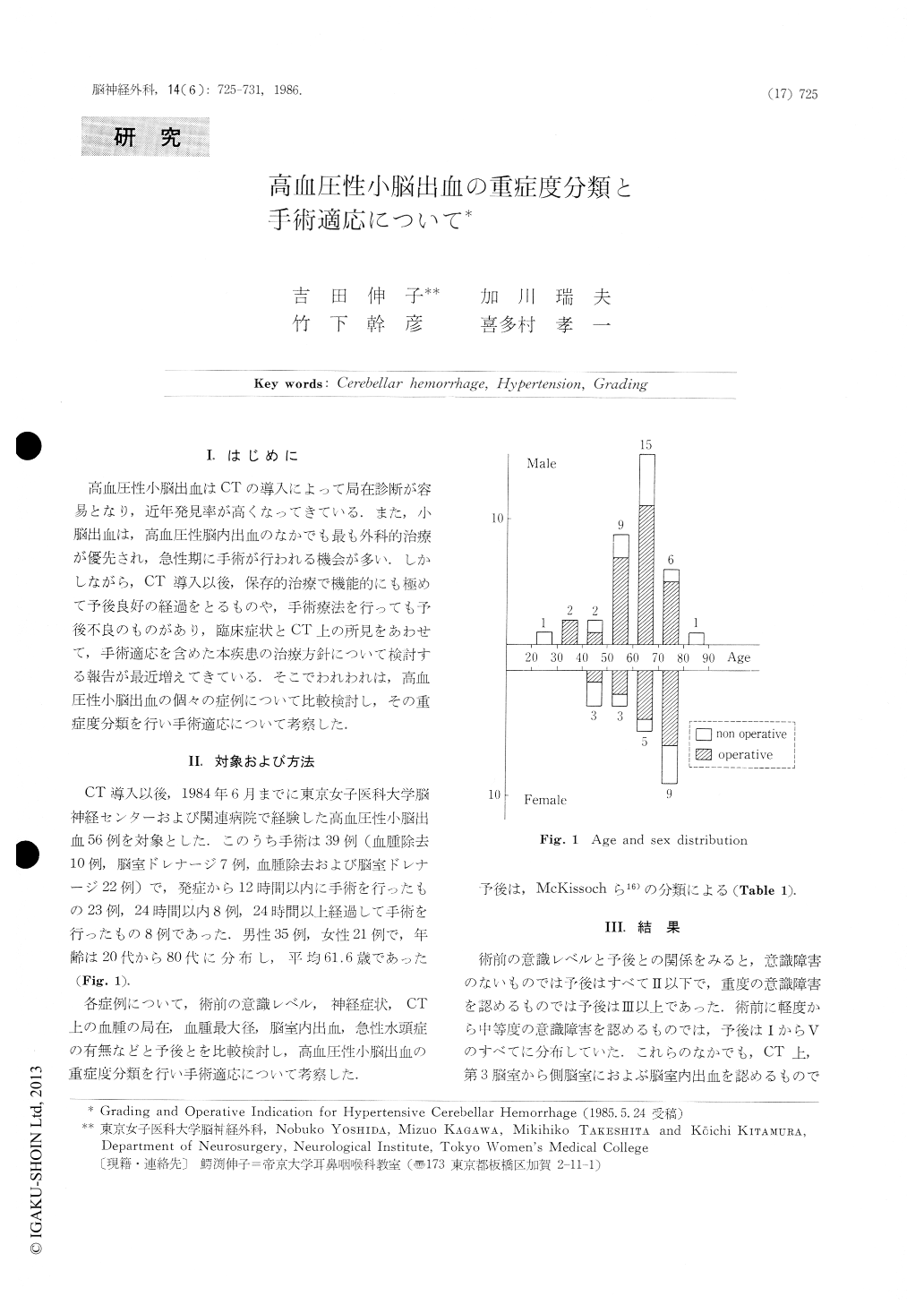Japanese
English
- 有料閲覧
- Abstract 文献概要
- 1ページ目 Look Inside
I.はじめに
高血圧性小脳出血はCTの導入によって局在診断が容易となり,近年発見率が高くなってきている.また,小脳出血は,高血圧性脳内出血のなかでも最も外科的治療が優先され,急性期に手術が行われる機会が多い.しかしながら,CT導入以後,保存的治療で機能的にも極めて予後良好の経過をとるものや,手術療法を行っても予後不良のものがあり,臨床症状とCT上の所見をあわせて,手術適応を含めた本疾患の治療方針について検討する報告が最近増えてきている.そこでわれわれは,高血圧性小脳出血の個々の症例について比較検討し,その重症度分類を行い手術適応について考察した.
Fifty six patients with hypertensive cerebellar hemorrhage diagnosed by CT scan were hospitalized from November 1976 up to June 1984.
The 35 male and 21 female patients ranged in age from 24 to 84 years, and 39 of them were operated on. The important factors related to prognosis of cerebellar hemorrhage were level of consciousness, size of hematoma on CT scan, and massive ventricular hemorrhage resulting in obstruction of the ventricular system. We classified the patient with cerebellar hemorrhage into 5 grades, according to the severity of these factors.

Copyright © 1986, Igaku-Shoin Ltd. All rights reserved.


